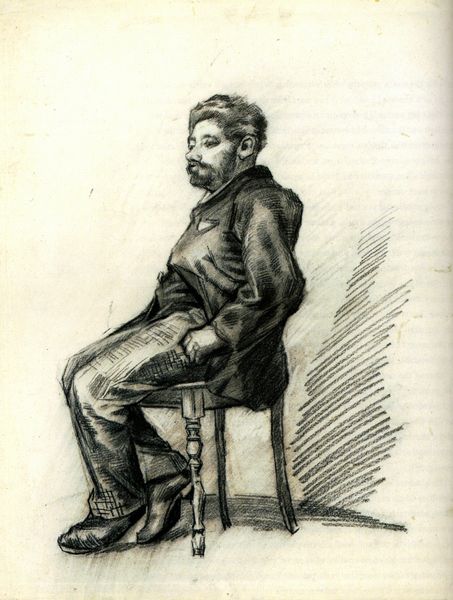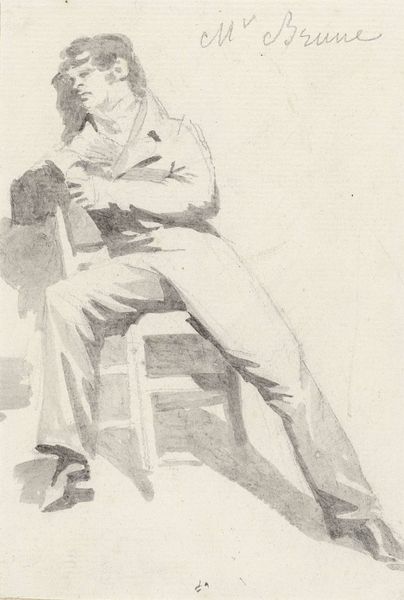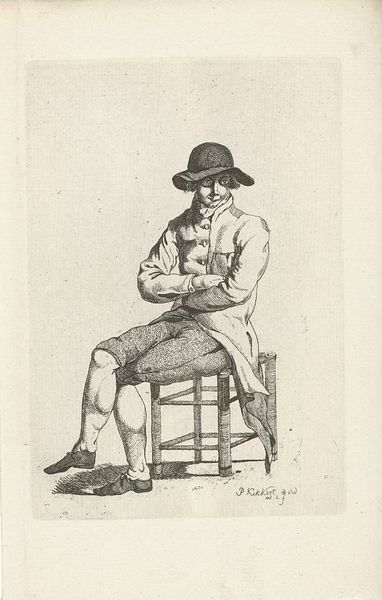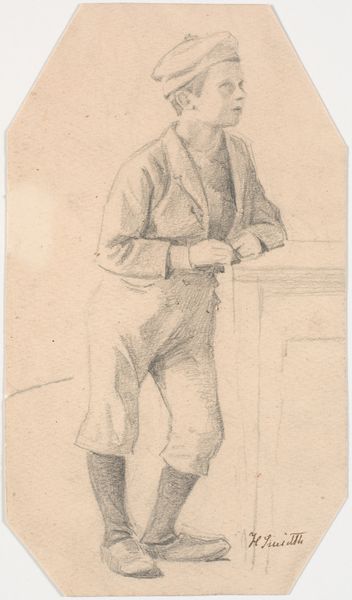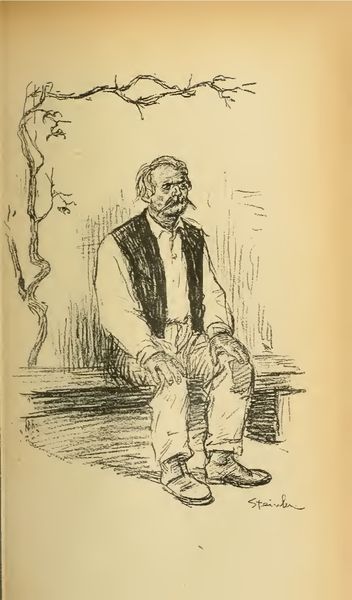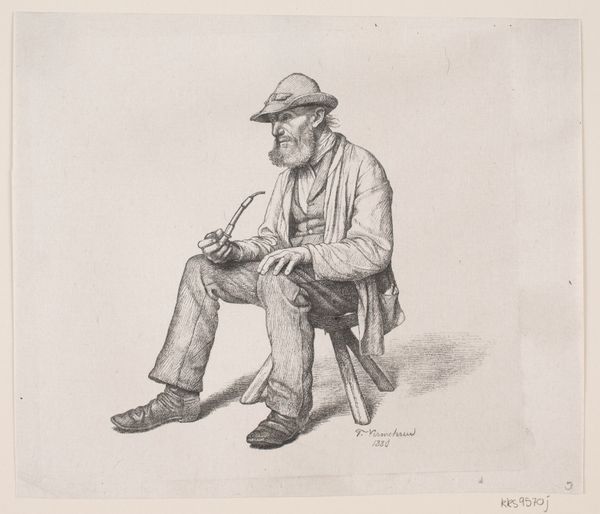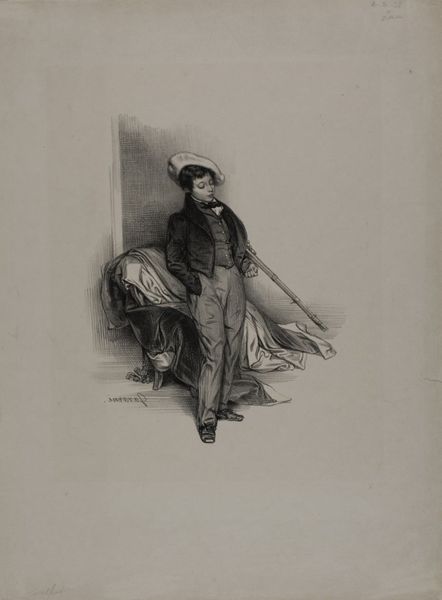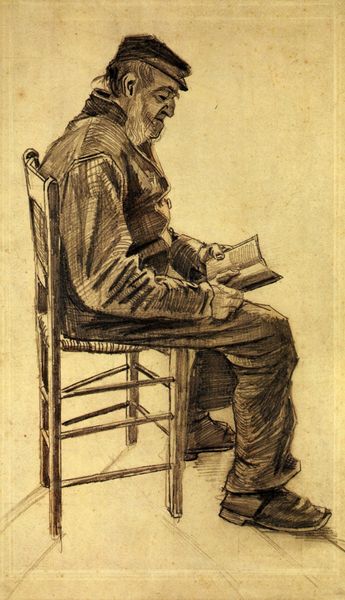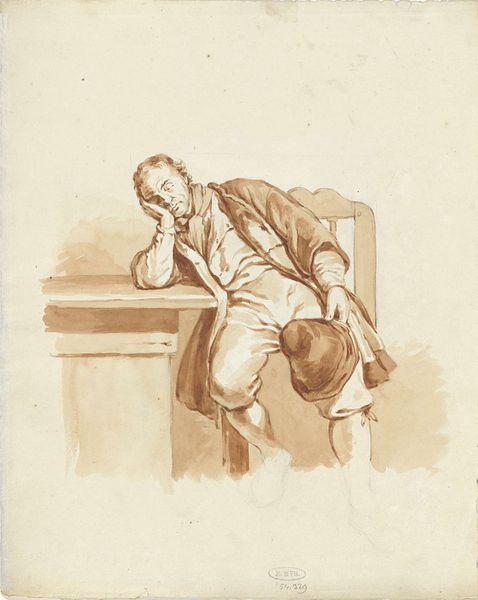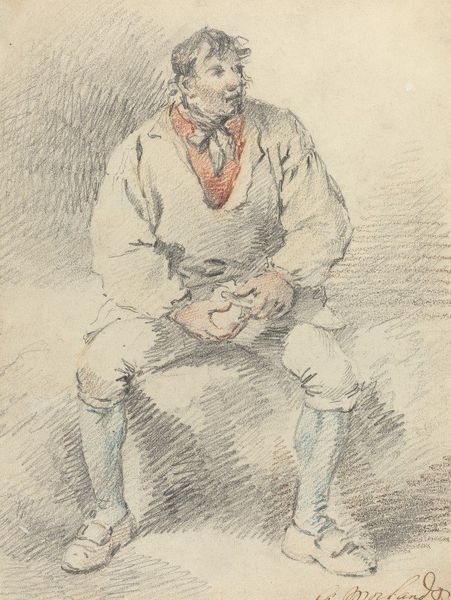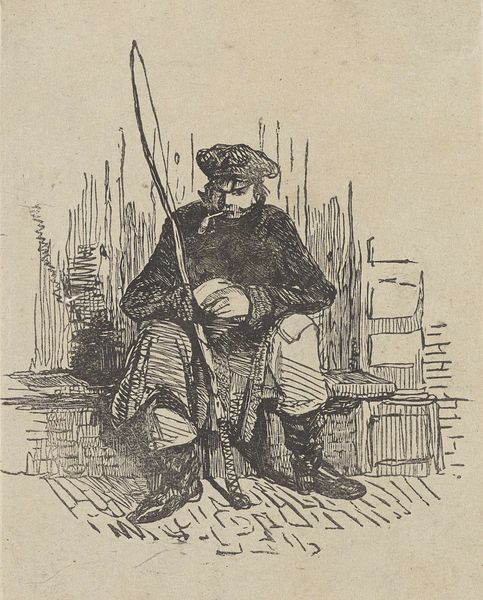
drawing, paper, pencil
#
portrait
#
drawing
#
paper
#
pencil
#
realism
Copyright: Public domain
Curator: Just look at him, slumped in that chair... It evokes a real sense of weariness, doesn’t it? There's a palpable mood in the sketch, all in the posture. Art Historian: Indeed. We're looking at a drawing by Vincent van Gogh titled "Seated Man with a Moustache and Cap," created in 1886. It's a pencil drawing on paper, currently held at the Van Gogh Museum in Amsterdam. Curator: The working class is showing here, but not like those perfectly painted Millet peasants. The pose conveys not idealization but fatigue and perhaps some disillusionment. He is anonymous and a clear reflection of the struggles marginalized people face every day. Art Historian: That reading certainly resonates. Van Gogh was deeply interested in the lives of ordinary people, and drawings like this one often served as studies for his paintings. His depictions offered insight into a segment of the community whose presence often went unacknowledged in other forms of visual culture. Curator: The very visible pencil strokes seem like traces of labor itself, giving it an expressive energy. The casual style could speak to broader shifts in the art world to question hierarchies and elitism that traditionally dominated artwork portrayals. Art Historian: That's a good point. This drawing was created while Van Gogh was in Antwerp and later Paris, where he encountered new artistic trends and experimented with his own style. The sketchiness might indicate a desire to capture the fleeting moments of modern life and the rapid pace of change happening around him. It captures a realism not commonly illustrated at the time. Curator: I agree. Also, his anonymity prompts questions of who gets to be seen and represented in art. It feels like a political statement, silently questioning art world conventions. What is your insight on this depiction? Art Historian: To consider that political message is something worthwhile, but the study is simply representative of many artists at that period focusing on their surrounding communities for representation within their studies. The work is raw, offering a genuine view of its subject, the working man of that era. Thank you for highlighting his stance to challenge perspectives around its original societal influences.
Comments
No comments
Be the first to comment and join the conversation on the ultimate creative platform.
